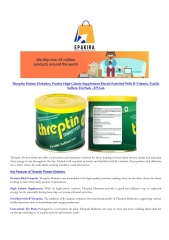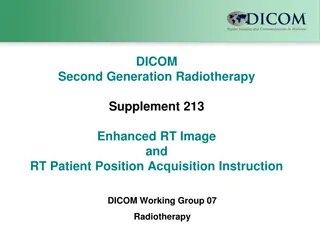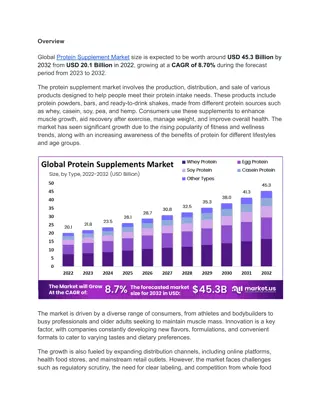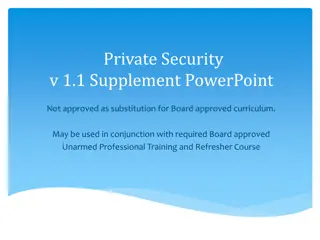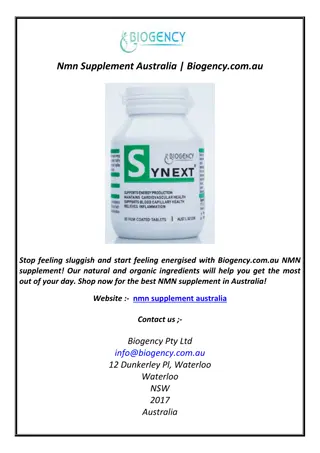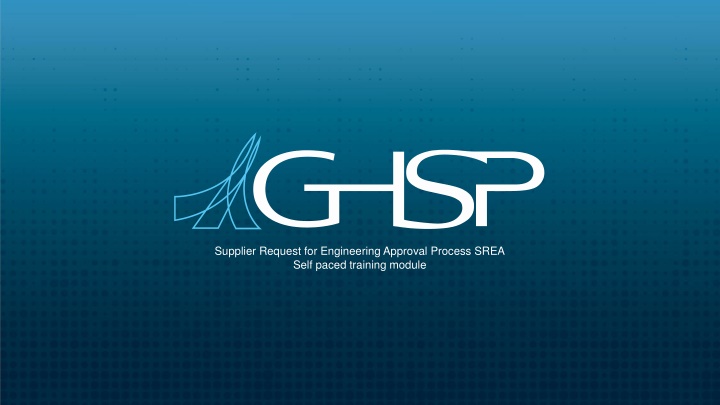
Engineering Approval Process Training - SREA Self-Paced Module
Learn about the Supplier Request for Engineering Approval (SREA) process, its purpose, when it is needed, and the flow of responsibilities between GHSP and the supplier. Gain insights into training objectives, what constitutes an SREA, and crucial pre-work requirements to ensure successful approval.
Download Presentation

Please find below an Image/Link to download the presentation.
The content on the website is provided AS IS for your information and personal use only. It may not be sold, licensed, or shared on other websites without obtaining consent from the author. If you encounter any issues during the download, it is possible that the publisher has removed the file from their server.
You are allowed to download the files provided on this website for personal or commercial use, subject to the condition that they are used lawfully. All files are the property of their respective owners.
The content on the website is provided AS IS for your information and personal use only. It may not be sold, licensed, or shared on other websites without obtaining consent from the author.
E N D
Presentation Transcript
Supplier Request for Engineering Approval Process SREA Self paced training module GHSP Confidential
Training Objectives Describe what the SREA process is and is NOT Define when an SREA form is required Identify the Pre-Work required to be done PRIOR to preparing the request Describe the process flow with responsibilities (GHSP or Supplier) from start to finish Review Strategies for gaining first time SREA approval Provide Master Good Examples GHSP Confidential
What is and is Not an SREA? An SREA is a process to identify, PLAN, and communicate a request to implement a PERMANENT product and/or process change that falls underneath the scope of AIAG PPAP. The results of the planning process are identified on the SREA form along with a timing plan and validation plan (if validation testing applies) The SREA is not applicable to temporary changes The Supplier Deviation Process applies GHSP Confidential
What is the Purpose? The SREA process is to demonstrate that you, as a supplier, proactively communicate the desire to make a change and that it shows the work plan to execute the expectations of the Production Part Approval Process (PPAP)*. The objective is to gain approval to proceed with the plan to change. Failure to follow this process has the potential of creating a recall event (worst case) and creates chaos for GHSP and our customers. * Refer to Section 3 Customer Notification and Submission Requirements. AIAG PPAP Manual 4th Edition GHSP Confidential
When is SREA Started? After a decision to change has been made by supplier Before a change has been started Before a change has been implemented or completed When the change falls under the scope of AIAG PPAP (latest edition) or GHSP Supplier Manual publications post 4/1/2014 found on www.ghsp.com GHSP Confidential
GHSP Supplier SREA Process Flow PLAN DO CHECK ACT GHSP Confidential
General Situations when a SREA is Required (not all inclusive) Change in manufacturing location from one address to another. Changing the manufacturing process sequence. Changing the control plan, such as frequency, evaluation technique or reaction plan. Correction of a discrepancy on a previously submitted part. Change to design records, specifications or materials. The above situations includes Sub-Tier N as well. Don t assume SREA is not needed. Verify If in doubt, call a GHSP SDE or SQE GHSP Confidential
Continued General Situations when a SREA is required SREA applicable changes include but are not limited to: A tool change (correction) that is not part of the approved PM plan. Replacement tooling (non-perishable). Request to make any change that would need to be documented on the design record. Regardless of which party is design responsible. These include :Material, Tolerance, Specifications, Special Characteristics Any permanent change to the manufacturing process that would be documented on any element of PPAP. This includes work instructions and job set ups that were referenced on the control plan at time of PPAP approval. Changes to work or job set up instructions that are a referred to as a control method/or reaction plan on the production control plan Any VA/VE idea GHSP Confidential


